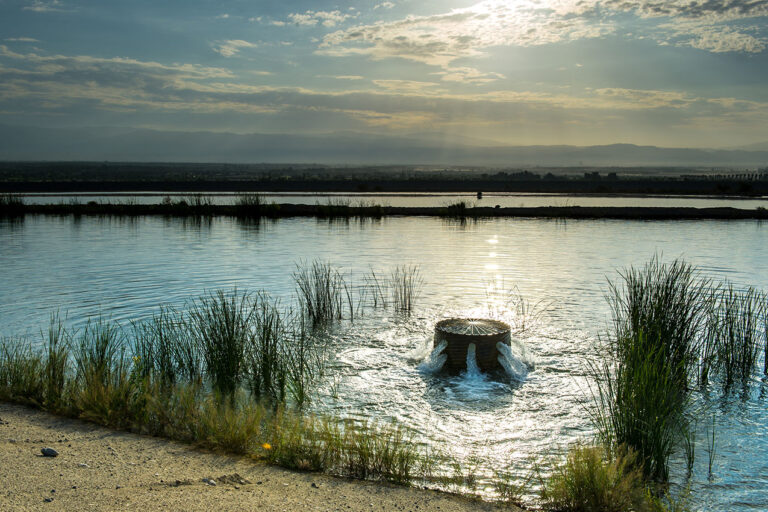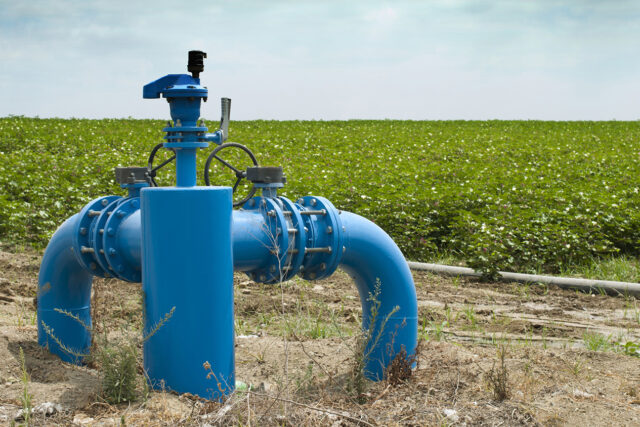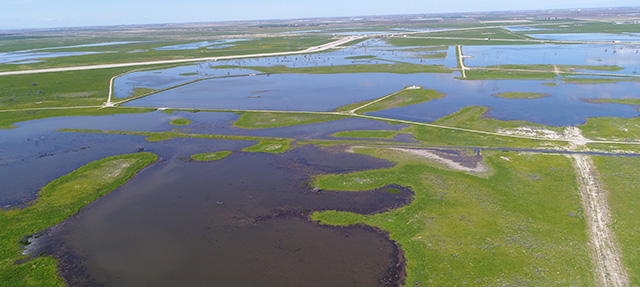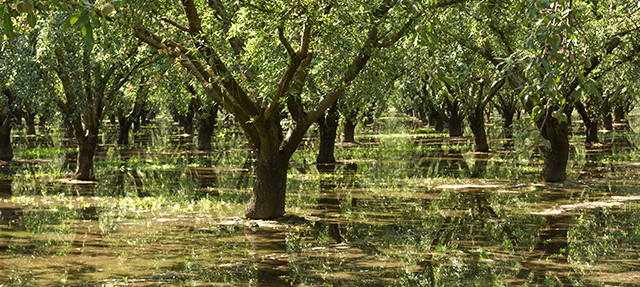Groundwater recharge is an important water management practice in California.
- Recharge occurs when water seeps into the ground to replenish underground aquifers. Although some recharge happens incidentally—water flowing into the ground from rivers, unlined canals, or excess irrigation—intentional recharge can restore groundwater levels and store water for later use.
- In coastal areas, intentional recharge prevents salty ocean water from entering freshwater aquifers. Recharge can also help prevent impacts from groundwater pumping, such as dry wells or sinking lands, while providing wetland habitat for birds, reducing flood risk, and storing water for droughts.
- Active recharge is a longstanding practice in much of urban Southern California and parts of the Bay Area, Central Coast, and Central Valley.
A variety of supply sources and methods are used to intentionally recharge aquifers.
- Common methods include filling dedicated recharge basins or ponds, directing water to unlined canals and riverbeds, injecting water through wells, and using extra surface water (when available) to avoid pumping (“in-lieu recharge”). There is also growing interest in recharging aquifers by applying extra irrigation water to croplands, or by spreading water on fallowed fields and natural landscapes.
- Supply sources include local floodwaters, surface water imported from other regions, and recycled water.
Groundwater banks can make underground storage available for various parties.
- While many local recharge projects do not track who benefits from the recharged water, groundwater banks recharge and store water on behalf of specific parties—both local and distant. These banks require formal accounting systems to keep track of balances, which decline during dry times as members withdraw water, and increase during wet times as water is deposited.
- Today, most groundwater banks are in Kern County and Southern California, in areas with good recharge conditions and access to conveyance infrastructure. But there is potential for banking to grow.
Groundwater banking is an important tool for managing droughts
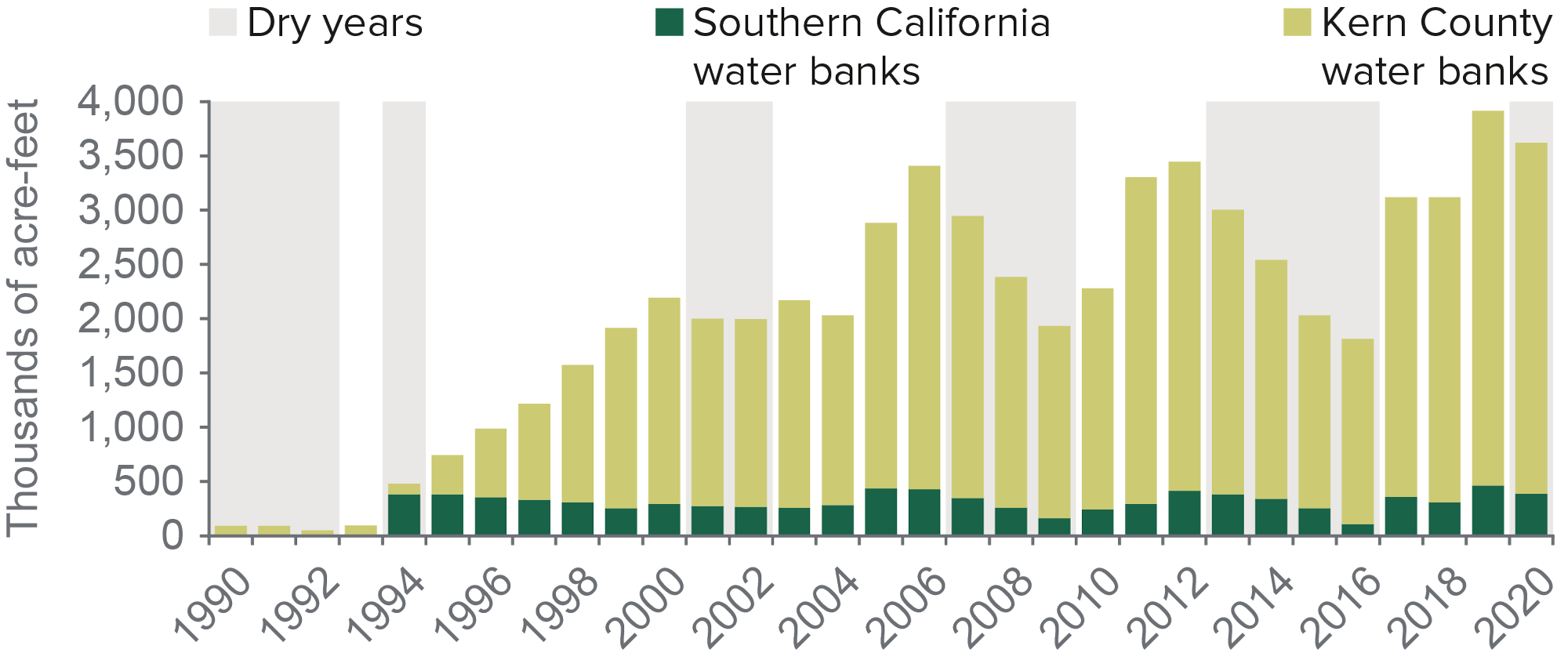
SOURCES & NOTES
SOURCE: Sencan and Hanak, California’s Water Market, By the Numbers: Update 2021 (PPIC, 2021).
NOTES: The figure shows groundwater bank storage balances. For Kern County, the county’s nine largest banks store water for more than 50 offsite parties within the San Joaquin Valley, Bay Area, and Southern California. Some additional storage may be occurring for the entities themselves. Southern California banks store water for the Metropolitan Water District of Southern California (MWDSC) in the Mojave Basin, the Coachella Valley, and several of MWDSC’s member agency locations. Dry years are those classified as critical or dry for the Sacramento Valley. For a shorter option, how about: We show 2016, a below-normal year, as a drought year because it came on the heels of multiple dry years.
Recharge can help bring basins into balance and increase resilience to climate change . . .
- The Sustainable Groundwater Management Act (SGMA), which requires local water users to bring groundwater use to sustainable levels by the 2040s, has spurred widespread interest in expanding recharge. In places with available water, recharge is cheaper than most water supply alternatives.
- Climate change is bringing warmer temperatures, reduced snowpack (which historically held a third of seasonal water storage), more volatile precipitation, more intense droughts, and higher runoff. California’s aquifers have much more storage capacity than its surface reservoirs, and storing more water underground can help water users adapt to the loss of snowpack and increased flood risk.
. . . but challenges remain to make the most of recharge potential.
- A key challenge to expanding recharge is that most available flows occur in the state’s wetter areas, while most overdraft (and most demand for recharge) occurs in areas with much less water. The timing of large storms—which create “big gulps” of water during a few days or weeks—also complicates the process.
- Current storage and conveyance infrastructure—as well as operational and regulatory practices—are not primed to take advantage of water available for recharge, especially during wet years. Active recharge on farmland could significantly increase if local agencies adopted formal accounting systems, as groundwater banks do.
The most overdrafted Central Valley basins lack ample supplies for recharge
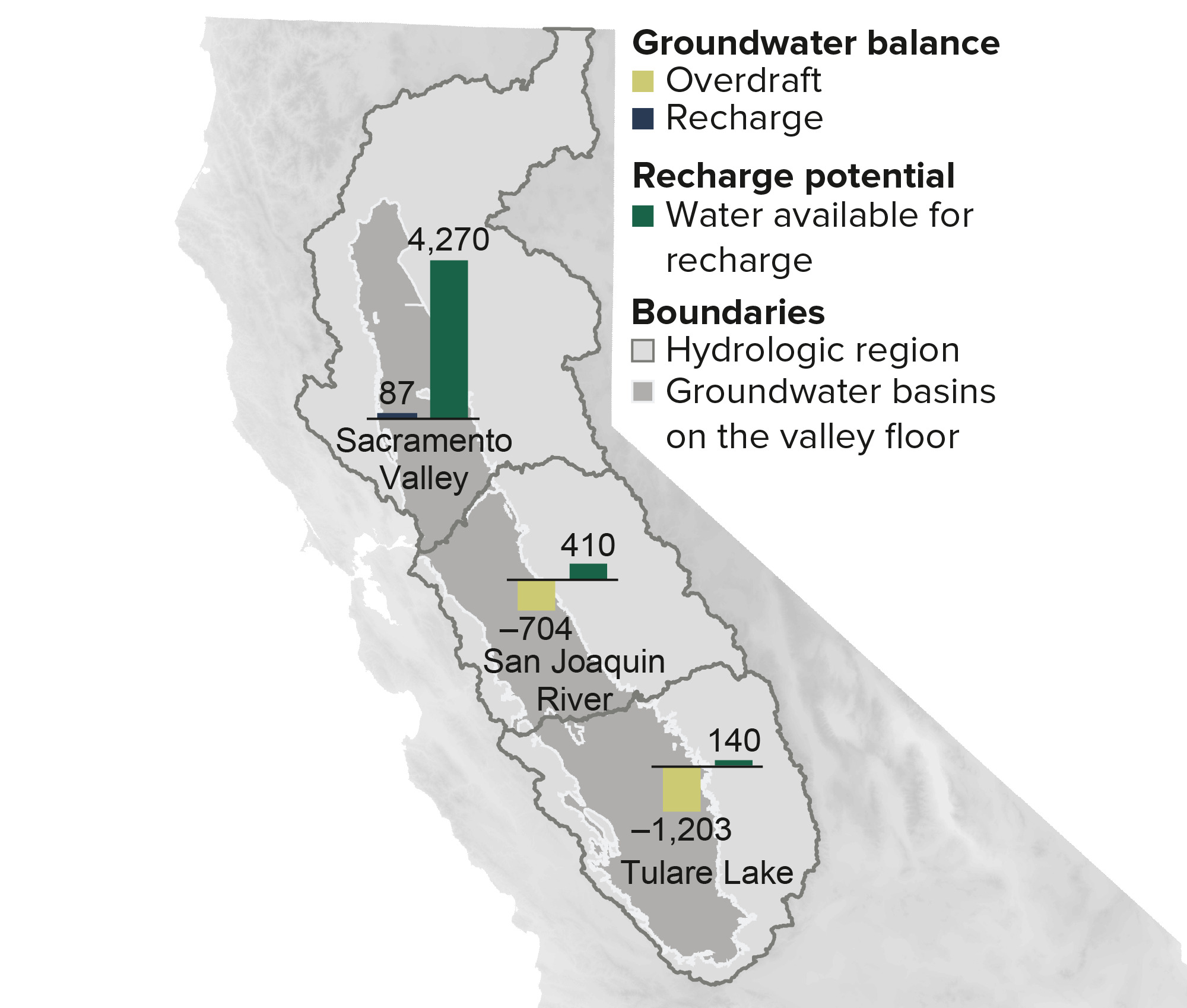
SOURCES & NOTES
SOURCES: Department of Water Resources (DWR) C2VSim-FG and PPIC San Joaquin Valley GSP Water Budgets (2020) (groundwater balances); and DWR (2018) Water Available for Replenishment, Appendix A (water available for recharge).
NOTES: Units are annual averages, in thousands of acre-feet. For groundwater balances in critically overdrafted basins, we used San Joaquin Valley GSP water budgets for 2003–10 (years for which all plans provide data). For other basins, we used C2VSim-FG estimates for the same years. Water available for recharge is DWR’s “maximum project estimate” for each region, except for the San Joaquin River region, where we subtracted Tulare Lake flows to avoid double counting.
